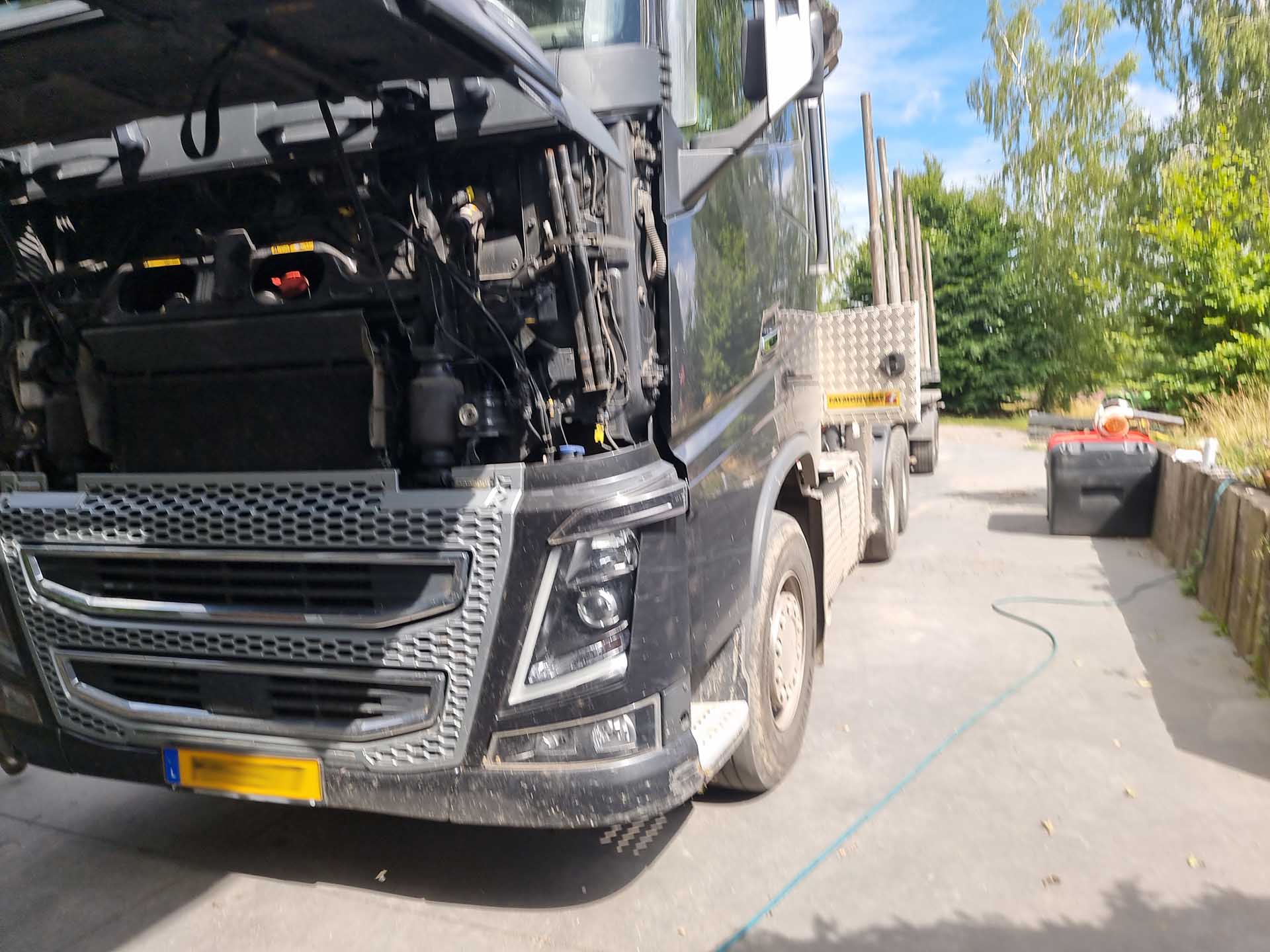Volvo FH16 650 AdBlue failure + Power increase

The fault codes present relating to the AdBlue fault
This Volvo FH16 650 has problems with AdBlue, which can cause the truck to reduce speed. Fault code P207F9A indicates “Reducing agent quality error” and code P204F93 indicates “SCR system dosing failure”.
The Euro 6d standard is a European regulation that sets pollutant emission limits for light and heavy vehicles. It aims to reduce greenhouse gas emissions and improve air quality by limiting emissions of carbon monoxide (CO), nitrogen oxide (NOx) and fine particles (PM). Torque reduction is a technique of limiting engine power by reducing engine torque. This can be put in place temporarily, such as in the event of pollution or safety problems, or permanently, such as to comply with the pollutant emission limits imposed by the Euro 6d standard. Torque reduction can have an impact on vehicle performance, such as a reduction in top speed (20kmh) or acceleration (engine torque).
Management by ACM and EMS control boxes
ACM (AdBlue Control Module) and EMS (Engine Management Module) are two systems that are closely related and work together to manage AdBlue problems in a vehicle.
The ACM is responsible for monitoring and controlling the injection of AdBlue into the Selective Catalytic Reduction (SCR) system. If problems are detected with the AdBlue, the ACM can send a signal to the EMS to adjust the engine regulation accordingly.
The EMS, on the other hand, is responsible for monitoring and controlling the operation of the engine. If problems are detected with AdBlue, EMS can adjust engine control to reduce pollutant emissions and protect the engine from damage.
Basically, the ACM and EMS work together to manage AdBlue problems by monitoring the operation of the SCR system and adjusting the engine control accordingly. If any issues are detected that cannot be resolved this way, they may notify the driver and indicate that service is required to fix the system.
Remove the clogged particle filter, empty it and reinstall it
In theory it is forbidden to break the particulate filter (DPF) to allow the exhaust gases to pass, as this can cause serious safety and pollution problems. The role of the DPF is to filter the soot and pollution particles contained in the exhaust gases of a diesel engine. If the DPF is clogged, it can reduce engine performance and cause pollution problems. This is the case when fault P24A400 (Clogging of the diesel particulate filter – soot accumulation too large (row 1)) is indicated on the instrument panel.
Error message P24A400 indicates “Clogged diesel particulate filter – too much soot accumulation (line 1)”. This means that your vehicle’s Diesel Particulate Filter (DPF) is clogged with a buildup of soot and pollution and needs to be cleaned or replaced.
The Adblue Fap Off reprogramming part for export as well as a Stage 1 on FH16 650 allows to go to 750hp
The BUSCAN (Communications and Control Bus) is a communication network used by various modules in your vehicle to exchange data and commands. Modifying the programming of the ACM and the EMS via the BUSCAN can disturb the operation of these modules and cause performance or safety problems if it is not done in accordance with the standards. However, when it is done well, it allows, among other things, to permanently remove the faults caused by a faulty emission control system, and this in particular for an export of your vehicle. Electronic manipulation remains invisible, however, but it is the responsibility of the driver to use his truck or not in places not subject to Euro 6 regulations.
In addition, after removing the DPF cartridge, we reprogrammed the vehicle in order to improve its engine performance. The D16K which equips this FH16 therefore increases to 750hp and 3400Nm of torque. Consumption is down by around 1 to 2L/100km.

